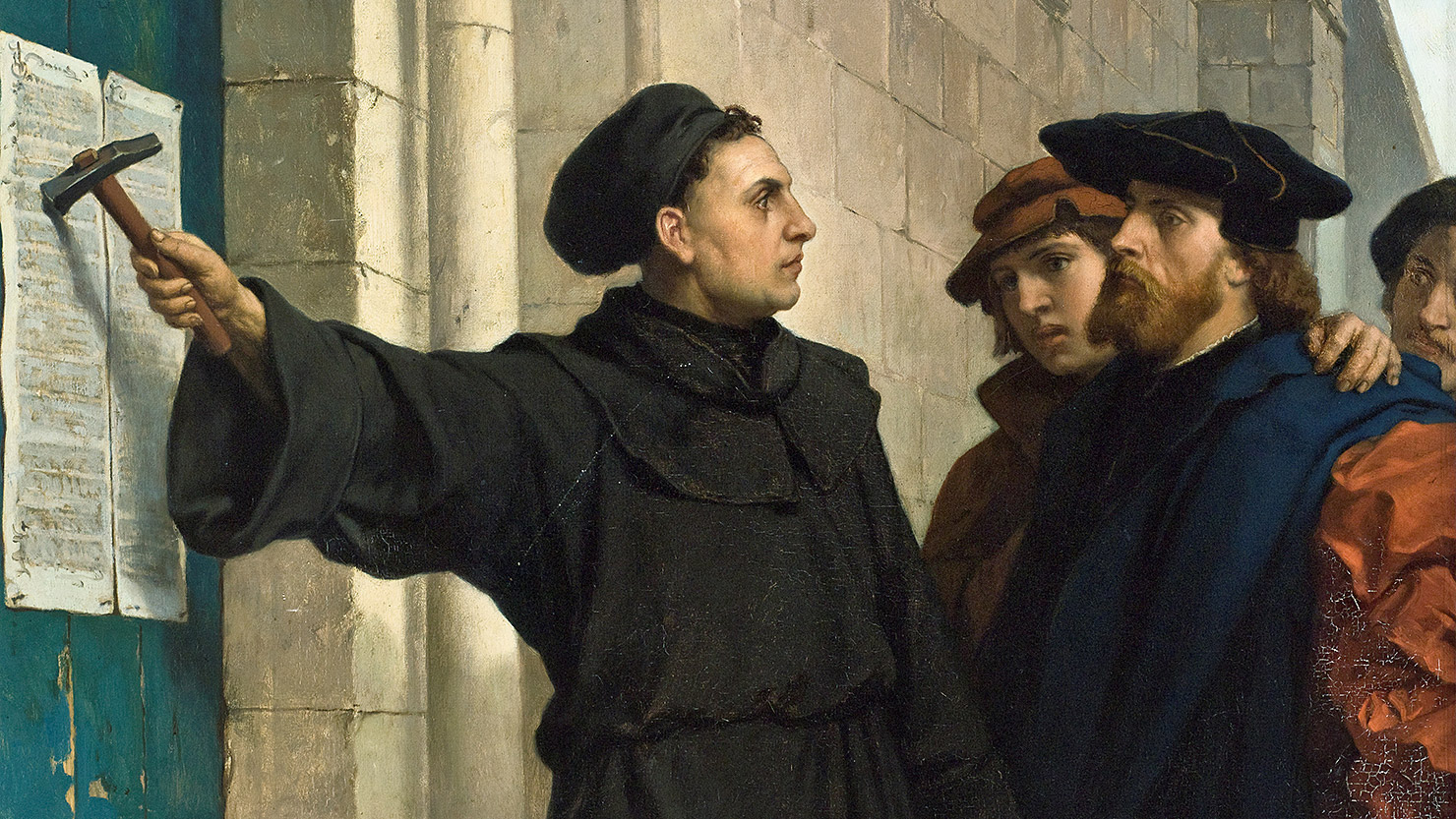Luther did not push his doctrines of justification by faith and the priesthood of all believers to their logical conclusion, namely, that if religion is wholly a matter between “man and God,” an organized church would be unnecessary. When radical reformers inspired by Luther attempted to apply these concepts to the churches of Saxony in the early 1520s, there was immense confusion, rioting, and vandalism.
Luther, who had no sympathy with such experiments, left his sanctuary in the Wartburg and returned to Wittenberg to drive out the radicals. He and his followers then organized a Saxon church that permitted its clergy to marry and put increased emphasis on sermons, but that also included ordained clergymen, ritual, dogmas, even some sacraments.
The Lutherans did not found their separate church as an alternative to the Roman Catholic, but as the one true church. Where a Lutheran church was founded, a Catholic church ceased to be; the Lutherans usually just took over the church building. Stimulated by Luther and his clerical and academic disciples, this process at first went on among the people of Germany without the intervention of political leaders. Much excitement was caused in 1525 when the head of the Teutonic Knights turned Lutheran, dissolved the order, and became the first duke of Prussia. Meantime, many of the free cities also opted for Lutheranism.
A major debate among historians today centers on the role of the cities in the growth of Protestantism. Some have argued that the free imperial cities of the Holy Roman Empire tended to find Lutheran teachings attractive because their civic institutions already emphasized those elements of Christianity that Luther found most important. There was a clear drift toward Protestantism in those regimes—whether city-state or emerging centralized monarchy—which were developing a limited centralism, for the idea of a transcendental God was compatible with emphasis on a single approach to God, as opposed to a complex and trinitarian one.
Furthermore, centralizing governments, and perhaps especially those in which guild representatives were most important, found it easier to identify with religious thought that taught that humanity was essentially corrupt. Luther’s view of the depravity of human nature supported the burghers’ fear of an undisciplined mob, “a great beast.” Thus Luther’s success was greatest in areas already politically predisposed toward his view of humanity.
Other scholars contest this view, which makes political or social structure more important than ideas, for they argue that even structure develops from and reflects a pattern of beliefs. Virtually all agree, however, that the cities played a crucial role. Since population was concentrated in them, the new power of the printing press could be effective more quickly in an urban setting.
Other social groups also used the Lutheran revolt to assert themselves. Just beneath the lay and ecclesiastical princes in the German social pyramid were the knights— the lesser nobility. Some of them held a castle and a few square miles from the emperor and were in theory as sovereign as the elector of Saxony or Brandenburg; others were simply minor feudal lords. Many knights were younger sons, gentlemen without land, whose only career could be that of arms. Luther’s challenge to the established order and the opportunity it gave to take over ecclesiastical holdings was too good a chance to be missed.
The most bitter social conflict of the early German Reformation, however, the Peasants’ Rebellion of 1524-1525. In many ways it resembled the peasant revolts of the fourteenth century in England and France. The rebellion was directed against attempts by lords to increase manorial dues. It lacked coordination and effective military organization and was cruelly put down by the propertied classes—perhaps 100,000 peasants were killed. It was a rebellion, not of the most oppressed peasants but of those who were beginning to enjoy some prosperity and who wanted more—what is known as a “revolution of rising expectations.”
The Peasants’ Rebellion was led by educated men who were not themselves peasants and who had a program—a set of revolutionary ideas of what the new social structure should be. Their leaders drew up a series of demands known as the Twelve Articles. They demanded that each parish have the right to choose its own priest, that the tithes paid to the clergy and the dues paid to the lord be reduced, and that peasants be allowed to take wood and game from the forests.
Although the Twelve Articles were relatively moderate, Luther was horrified at what the peasants’ leaders had found in his German translation of the Bible. He burst into impassioned abuse in a tract Against the Murdering, Thieving Hordes of the Peasants. Luther thereupon turned to the princes, and his church became an established church, respectful toward civil authority. He is quoted as saying, “The princes of the world are gods, the common people are Satan.”
Luther’s conservatism in social, economic, and political matters was by no means inconsistent with his fundamental spiritual position. To Luther, if the visible external world was really wholly subordinate to the invisible spiritual world, the most one could hope for in the world of politics was that the visible, external world be kept in as good order as possible, so that the spiritual could thrive. Authority, custom, law, and existing institutions combined to provide this orderliness.
Luther’s views brought him increasing support from kings and princes. By the mid-sixteenth century, Lutheranism had become the state religion in most of northern Germany and in Scandinavia. The Scandinavian kings, in particular, appear to have been attracted to the Reformation for secular reasons: the opportunity to curb powerful bishops and to confiscate monastic wealth. Because of this and Luther’s increasing conservatism, the initiative in the radical Reformation was transferred from the Lutherans to other Protestants.

